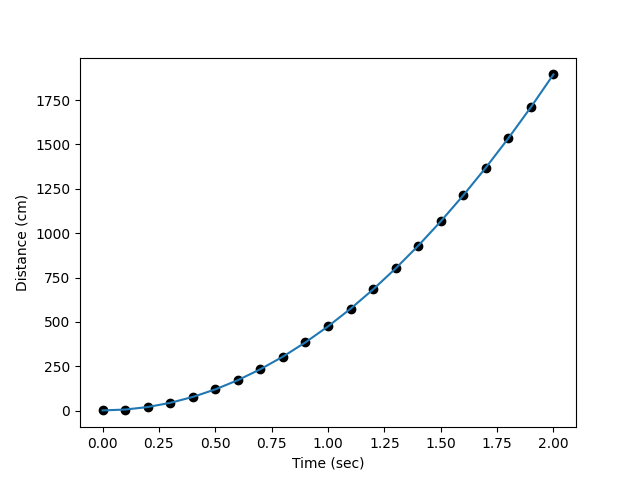Learning Scientific Programming with Python (2nd edition)
Q6.5.2: Fitting data to a quadratic function
Question Q6.5.2
The ticker timer, much used in school physics experiments, is a device that marks dots on a strip of paper tape at evenly-spaced intervals of time as the tape moves through it at some (possibly variable) speed. The following data relate to the positions (in cm) of marks on a tape pulled through a ticker timer by a falling weight. The marks are made every 1/10 sec.
x = [1.3, 6.0, 20.2, 43.9, 77.0, 119.6, 171.7, 233.2, 304.2, 384.7,
474.7, 574.1, 683.0, 801.3, 929.2, 1066.4, 1213.2, 1369.4, 1535.1,
1710.3, 1894.9]
Fit these data to the function $x = x_0 + v_0t + \frac{1}{2}gt^2$ and determine an approximate value for the acceleration due to gravity, $g$.
